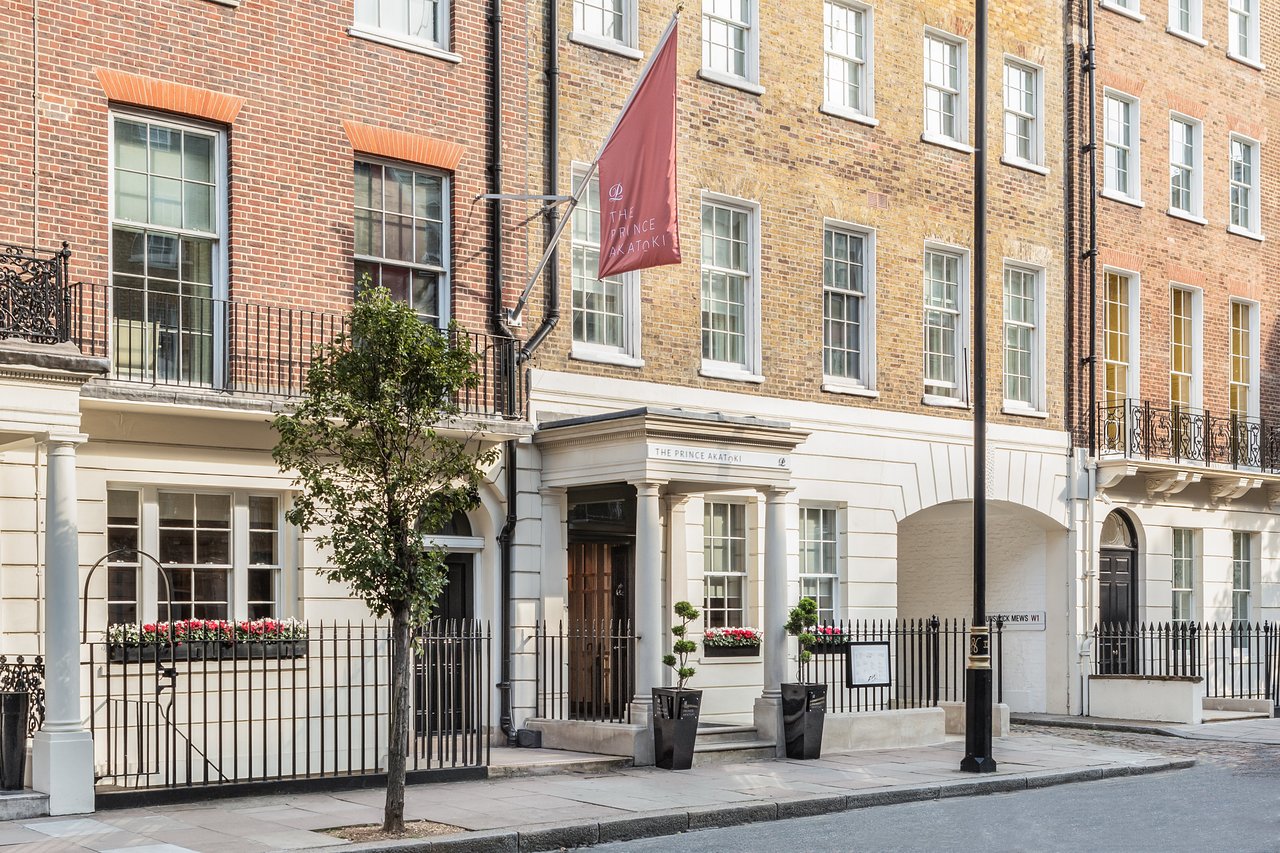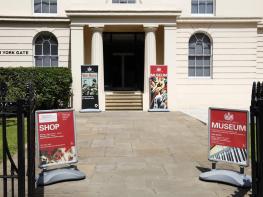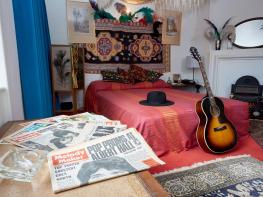The Dorset Square Hotel is a beautiful Regency townhouse overlooking the leafy, private garden…
Around Regent's Park

4 miles (6.4kms)
About the walk
'I must go seek some dew-drops here
And hang a pearl in every cowslip's ear'
So sings the Fairy to Puck in A Midsummer Night's Dream, William Shakespeare's romantic fantasy. If you think that romance is dead, try this walk, especially on weekdays, when it's quieter. Along these canals you'll see barges rather than gondolas, but on a fine, balmy day you can return to Regent's Park in the evening for a performance at the magical open-air theatre. You never know, this walk could well turn out to be a recurring midsummer night's dream.
Nash's dream
'It shall be called Bottom's Dream because it hath no bottom...' wrote Shakespeare. In a similar way, this walk was John Nash's dream because, in 1820 when he designed the area, it was the grandest piece of town planning ever devised in central London. In fact, it has not been matched since. His scheme was based on a park peppered with large villas that looked like separate mansions but which actually consisted of more than 20 houses. Sprinkle on to this some grand terraces and the result is idyllic Regent's Park and its little sister, Primrose Hill. The views over London from Primrose Hill are exhilarating.
A pucker venue
If you're lucky enough to find that A Midsummer Night's Dream is on at the open-air theatre, don't expect it to be one of Shakespeare's best stories, for it's about ideas rather than plot. 'The course of true love never runs smooth' explained the bard and this concept carries on throughout the play. Shakespeare uses the common theme of a daughter who wants to marry against her father's wishes and the comic caricatures are portrayed by Bottom and Puck. Since the play was first published in 1600 it has been the source of inspiration for countless stories of tiny fairies living in the woods. Walt Disney made a fortune from the idea, but it didn't entertain the prominent diarist Samuel Pepys, who saw it in 1662 for the first time and wrote: '... nor shall I ever (see it) again, for it is the most insipid ridiculous play that I ever saw in my life'. Pepys did, however, admit to appreciating the play's good dancing and attractive women!
Had Pepys seen it in the unique setting of Regent's Park however he might have thought differently. He could have arrived early to picnic and drink champagne on the lawn, and afterwards taken a stroll to Primrose Hill to see London's carpet of flickering lights below. Try it one midsummer's day and if this little potion doesn't bring some magic into your life, you'll have to ask Puck for some help.
Walk directions
Take the north exit from Baker Street tube and turn right, along Baker Street. Cross the road via two sets of pedestrian lights and enter Regent's Park. Turn right. Cross the bridge over the lake and then bear left, passing the bandstand.
Turn left when you reach the Inner Circle road. Beyond The Holme turn left, through the metal gates, and over Long Bridge. When the paths fork ahead, take the right-hand one and keep ahead at the next crossing of paths.
Go through the gate, cross the Outer Circle road and follow the path opposite to cross Primrose Hill Bridge. Turn right along a path leading down to the Regent's Canal, then turn sharp left. Continue along this path – which initially leads underneath the bridge and then leads past London Zoo's aviary – for 0.25 miles (400m). You'll also pass under four bridges (some with ornate ironwork) and see some colourful canal boats.
At the fourth bridge turn left up the path, signed 'London Zoo, Regent's Park' leading to St Mark's Church. At the gate turn left along Prince Albert Road and pass an entrance to London Zoo. Continue for 100yds (91m) then, at the pedestrian lights, cross the road to enter Primrose Hill. Take the right-hand path and follow it uphill to the viewpoint.
Follow the path that bears left, leading downhill, to join a straight path that leads to Prince Albert Road. Cross at the zebra crossing and turn right. In about 15yds (14m) turn left.
Don't cross the bridge but turn right along a hedge-lined path that bends sharply to the left on to the tow path. Turn right and follow the tow path for 0.5 miles (800m). The banks of the canal are ivy-clad with weeping willows, and palatial homes line this stretch of the walk. Continue ahead under the railway bridges – less enchanting but rest assured that better things lie ahead – and, after a few paces, you'll pass the houseboats moored at Lisson Green before a tow path tunnel.
As the canal disappears under another tunnel, walk up the steps on the right and continue along Aberdeen Place. At the end cross a road and follow Blomfield Road into Little Venice. Cross Warwick Avenue and follow the road as it bends to the right, past the footbridge. Turn right into Warwick Place then next left and Warwick Avenue tube is 100yds (91m) ahead.
Additional information
Paved streets and tarmac paths
Exclusive properties and idyllic park
No particular problems
AA Street by Street London
At The Hub, Regent's Park
WALKING IN SAFETY
Read our tips to look after yourself and the environment when following this walk.
Find out more
Also in the area
About the area
Discover Greater London
Greater London is one of the world’s largest urban areas; 33 boroughs stretching north to Enfield, south to Croydon, east to Havering, west to Hillingdon and with central London at the heart of it all.
Greater London was officially created in 1965, but the boroughs themselves all have their own histories going back much further. Greenwich is home to the Prime Meridian, which all clocks on earth take their time from, while Hounslow contains Heathrow Airport, one of the busiest airports in the world. Greater London contains a multitude of parks and green spaces, from the six Royal Parks (including Richmond Park, Green Park, Hyde Park and Regent’s Park) and other huge open spaces like Hampstead Heath and Clapham Common; to smaller community spaces like Clissold Park in Stoke Newington and Burgess Park in Southwark.
The centre of London has its quiet spaces too, like Coram’s Field by Great Ormond Street, and Camley Street Natural Park, a stone’s throw from King’s Cross and St Pancras. One of the city’s most impressive features is the London Underground. Beginning in 1863 as the Metropolitan Railway, it took commuters into The City from the suburbs of Middlesex. It was the first underground railway in the world, and now consists of 11 lines, 270 stations, and 250 miles (402km) of track. It’s estimated that nearly five million journeys are taken every day, and there are nearly one and a half billion riders each year. At peak times, there are more than 543 trains whizzing around the Capital.
Nearby stays
Restaurants and Pubs
Nearby experiences
Recommended things to do
Why choose Rated Trips?
Your trusted guide to rated places across the UK
The best coverage
Discover more than 15,000 professionally rated places to stay, eat and visit from across the UK and Ireland.
Quality assured
Choose a place to stay safe in the knowledge that it has been expertly assessed by trained assessors.
Plan your next trip
Search by location or the type of place you're visiting to find your next ideal holiday experience.
Travel inspiration
Read our articles, city guides and recommended things to do for inspiration. We're here to help you explore the UK.


















